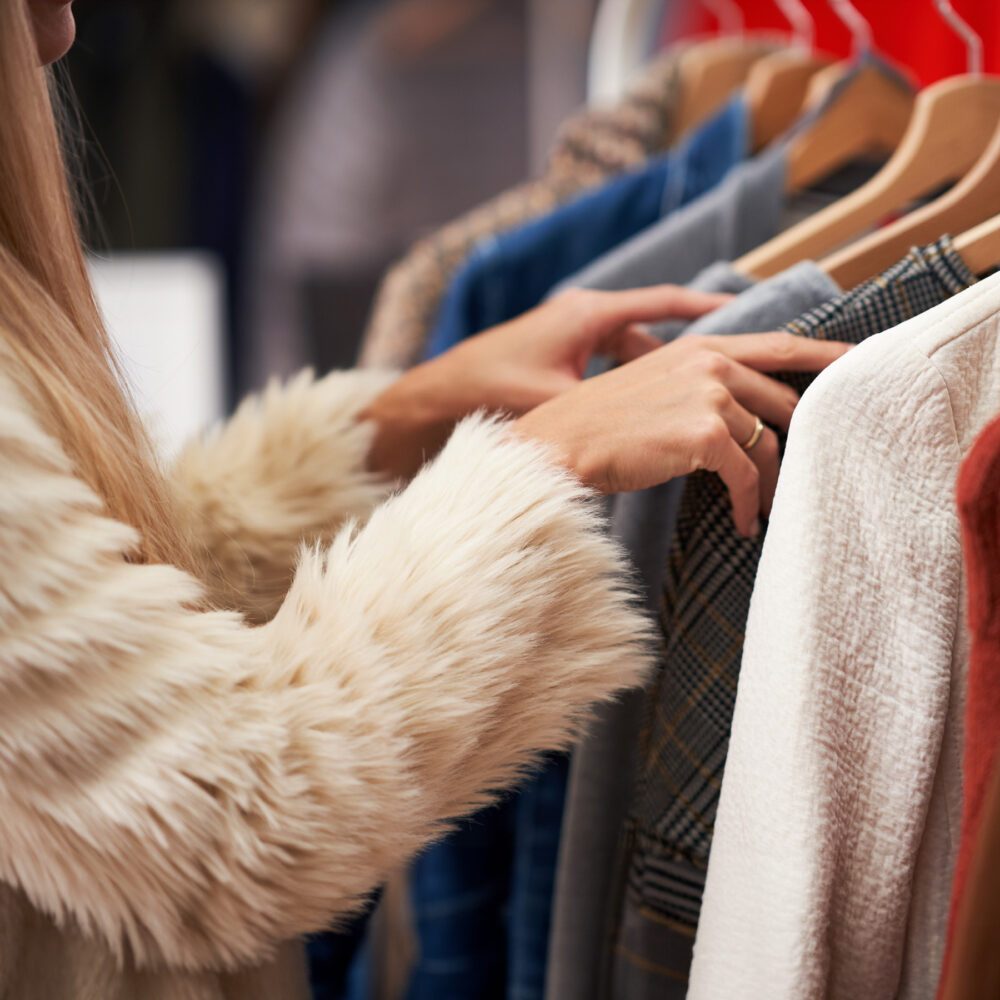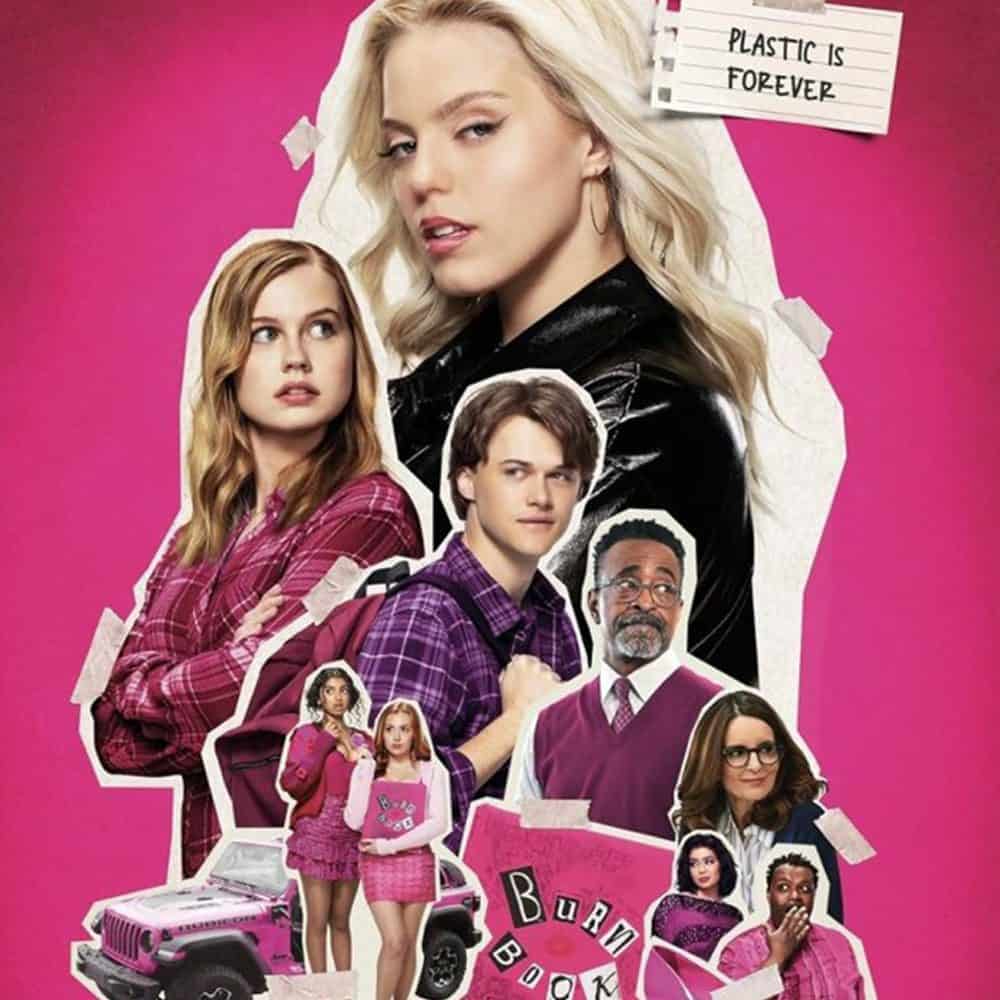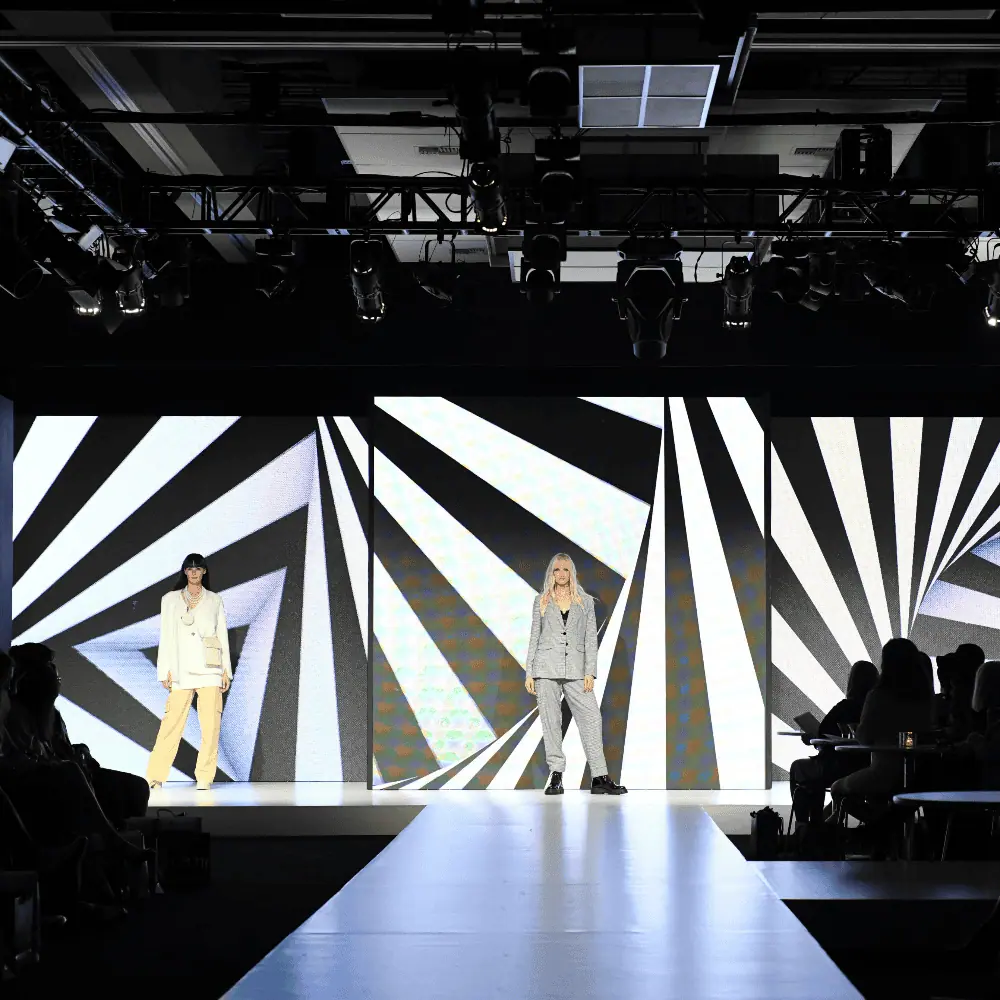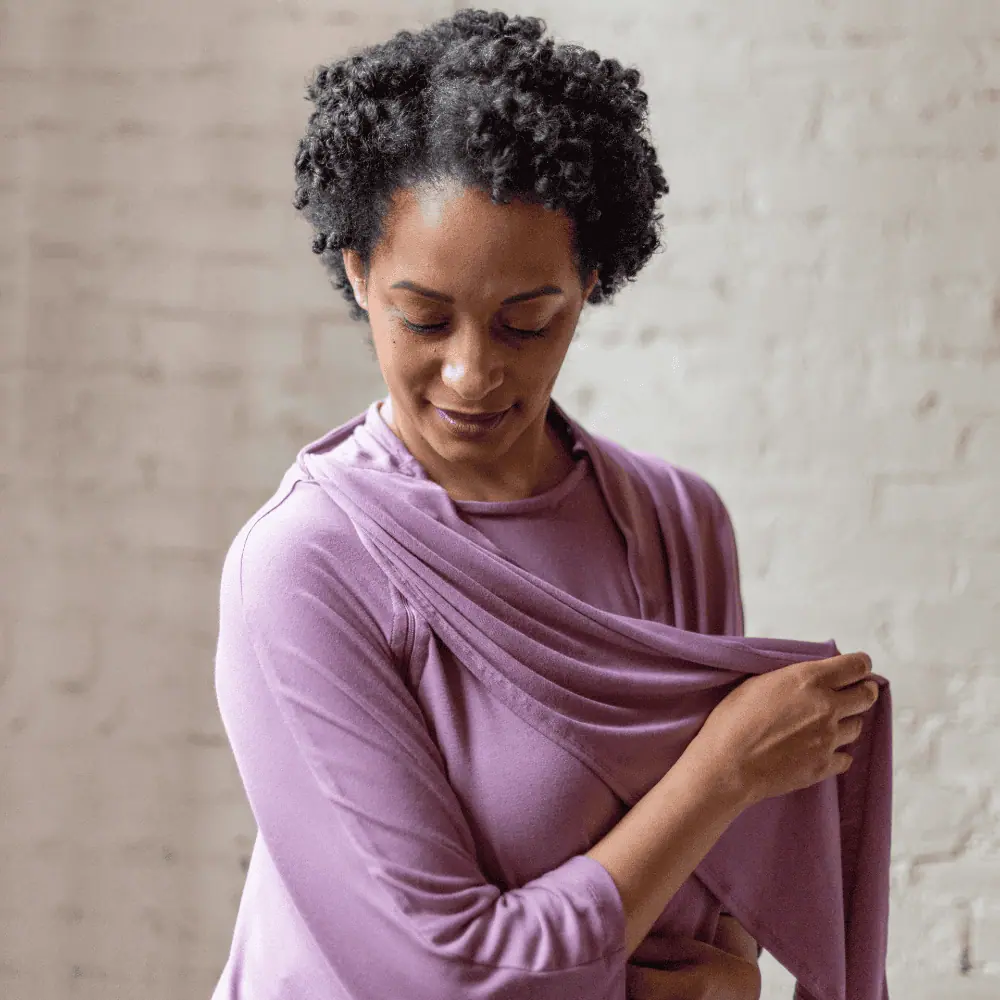Seattle Culture
Authentic, Inclusive, Functional
These three Seattle brands are forging unique paths in fashion
By Rachel Gallaher May 6, 2024

This article originally appeared in the March/April 2024 issue of Seattle magazine.
“Seattle Fashion” is a phrase long associated with puzzled looks, rolled eyes, and audible scoffs. Known for embracing technical gear and performance wear, the Emerald City had its last big fashion-forward moment in the 1990s, when the emerging grunge movement went global.
Despite the ubiquitous “casual and comfortable” look, Northwest dressing is starting to take a more thoughtful turn — it just requires a discerning eye to spot the elusive trendsetters. When talking street style, Seattle might fall flat when put up against New York, Paris, or Los Angeles, but many of its designers are leaning into the pioneering spirit of the Pacific Northwest to produce an interesting sartorial output, much of it grounded in social good.
Here are three brands pushing against the typical industry thread, putting ideals such as cultural identity, inclusivity, and ethical business practice into every stitch and seam.
Guillermo Bravo
For Luis Velez, the founder and creative director of contemporary fashion label Guillermo Bravo, fashion has always been about more than just clothes. A Colombian immigrant who moved to the United States with his family at 8 years old, Velez spent long, hot Miami summers playing basketball and trying to make friends. It was a difficult task, as he moved without knowing English. With the help of a stylish older sister and a knack for thrifting, Velez started to use clothing and shoes to express himself and connect with others around him, something that the sneaker-obsessed designer still does today.
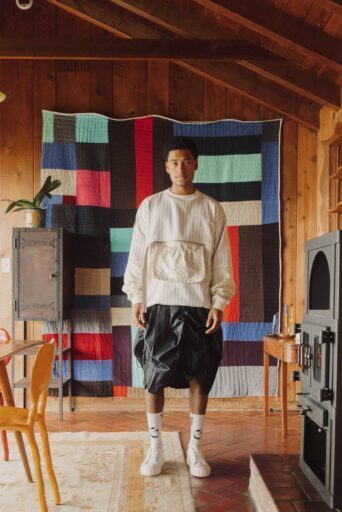
Oversized sweater and customizable pleated skirt by Luis Velez
Photo by Brandon Scott Herrell
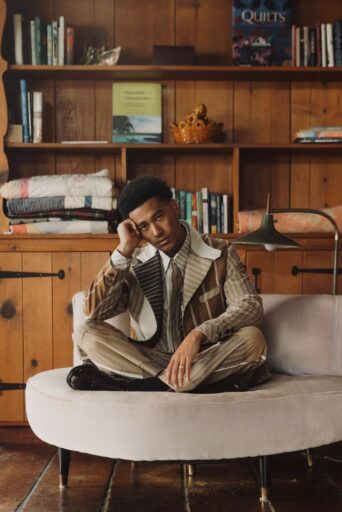
Patchwork blazer and raw hem trousers by Luis Velez
Photo by Brandon Scott Herrell
“I always like to look dressed up when I go out,” Velez says, “even when I’m wearing something more casual, I try to tailor it well or have interesting details like pleats or zippers in unusual places.”
Velez studied creative writing and music in college, but has always gravitated toward fashion. With a deep love for sneakers, Velez learned about footwear construction and development by making oxfords and Air Jordan 1’s by hand. He also took industrial sewing classes through Seattle Central College’s apparel program. In 2018, he launched Guillermo Bravo, a genderless shoe and apparel brand. The underlying idea was to produce high-quality, meticulously crafted pieces that are functional but edgy.
In a recent fall collection, Velez adorned traditional knit cardigans with fringed leather pockets; crisp white shirts with intricately layered collars and a sash-like feature; and a quilted bomber jacket patterned with pink and yellow mums. Each piece is utilitarian, but unique details are sidewalk eye-catchers.
“We find most of our influences in street style,” Velez says, “but we take those ideas into the studio and develop them further. Think street sensibility but in a mash-up with thoughtful tailoring.”
Velez has played it carefully the past few years, releasing small capsule drops via social media, with a smattering of in-person events and fashion shows peppered in. In 2023, he showed collections in New York and Paris, receiving positive feedback that made him feel hopeful about the future, with an eye to producing more pieces and getting into brick-and-mortar boutiques.

Luis Velez brings a classic tailoring approach to streetwear and techwear
Photo by Nick Beeba
“It’s taken a lot of patience from all of us,” he says of the production process (currently, Velez works with two sewists and apparel developers in his SoDo studio). “We are doing slow fashion, and sometimes it’s slower than slow fashion. There’s a lot of trial and error, but I’d rather take the time to make something right.”
Prima Dona Studios
One morning in 2012, after nearly a decade of working in the tech industry, Dona Sarkar woke up and decided to enroll in fashion school. Born in Kathmandu, Nepal, Sarkar studied computer science at the University of Michigan, moving to Seattle after graduation to work for Siebel Systems, a company specializing in customer relationship management software. In 2005, Sarkar started at Microsoft (where she is currently building a copilot extensibility program) as a software engineer working on the Windows team. While she loved her job, by 2012, she was looking for a new creative outlet.
“It was a strange compulsion,” she says of her enrollment in fashion school. “I was burned out from looking at a screen all day and wanted to do something with my hands.” Shortly after her sartorial revelation, Sarkar was walking around Ballard when she saw a storefront advertising the New York Fashion Academy. She took it as a sign from the universe and immediately enrolled.
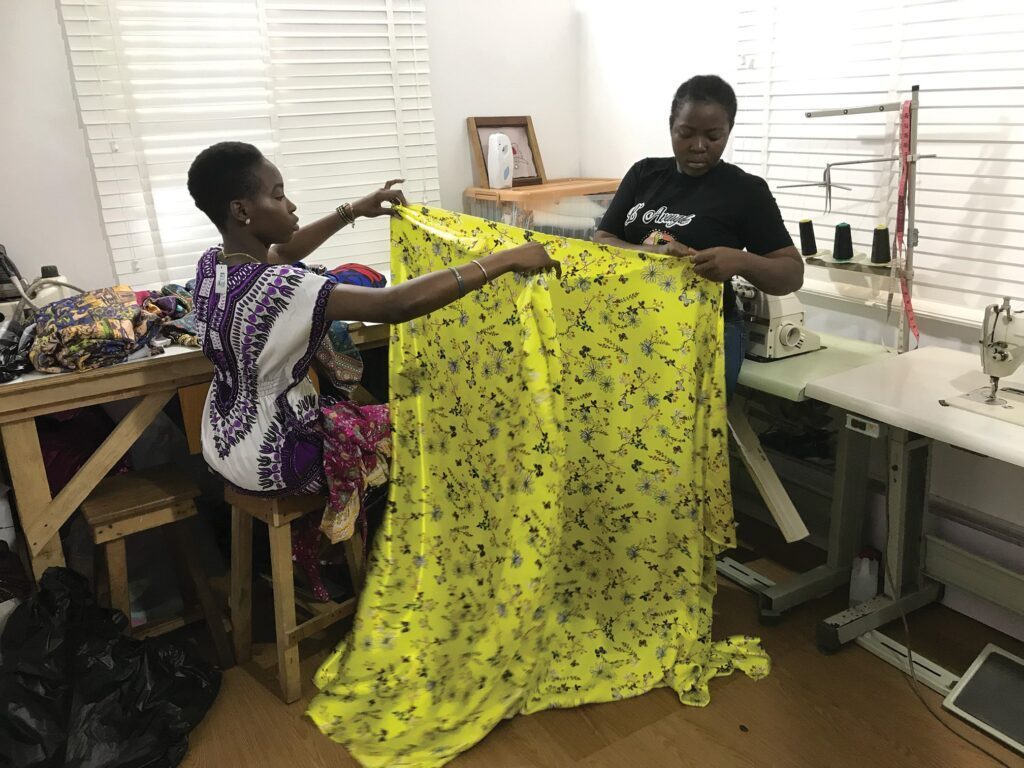
The fashion line created by Dona Sarkar caters to people of all sizes, genders, and abilities,
and is tailored by people across the world.
Photo by Jeremiah Marble
“My dad’s mother owned a womenswear and tailoring shop for 60 years, so I was around that environment when I was younger,” Sarkar recalls, “and I’ve always loved fashion, but there’s a big difference between being a consumer and a creator.”
First, Sarkar needed to learn how to sew. Armed with a lengthy supply list, she headed to Stitches fabric store on Capitol Hill. There, she hired someone to teach her the basics. Sarkar spent 15 months at the New York Fashion Academy, graduating with the skills to produce her own clothes but no plans to start a business. An author and prolific public speaker, Sarkar traveled often and was frequently stopped on the streets of New York, London, and Tokyo by women who wanted to know where she got her dress or blouse.
“I was facing deep imposter syndrome,” Sarkar recalls. “I had excuses. I wasn’t a professional, I was self-taught, I had a full-time job, I didn’t know anything about business.”
One thing she did know was what women wanted. In an industry dominated by men, Sarkar designs clothes not for the male gaze but for women like herself: professionals, dreamers, and creatives. Women who want to look good, feel powerful, and aren’t afraid to take up space.

The fashion line created by Dona Sarkar
Photo by Jeremiah Marble
Sarkar officially launched Prima Dona Studios in 2019, looking to maximize the inclusivity, sustainability, and ethics behind the brand’s output. The pieces, from long-sleeved kaftan dresses to wrap skirts, are bright, boldly patterned, constructed to last for years, and include thoughtful details such as large pockets that fit a phone, a wallet, and keys, without looking overstuffed and bulky.
Built on the idea of pushing back against the established fashion industry, Prima Dona Studios is all about empowering women, both customers and employees. “We pay Seattle wages to all of our tailors, no matter where they are in the world,” Sarkar says. “I believe that people should be paid fairly for their work.” Sarkar has also worked with Afghan immigrant and refugee women in greater Seattle through the local nonprofit organization Undaunted Women.
“It’s been a great lesson to see that you can run a business that does well while also doing good,” Sarkar says. “I did not expect this to go so joyfully. Every time I see someone put their piece on for the first time and they say, ‘I feel powerful,’ that right there is why I do this.”
Eighth Generation
Sixteen years ago, artist and designer Louie Gong, who is both Nooksack and Chinese, spent hours on his living room floor, covering sneakers with custom cultural art. Soon, the popularity of his one-off creations took off, demand grew, and he launched Eighth Generation, a fashion and lifestyle brand rooted in supporting and promoting Native artists and creatives.
“The market is so different from where it was when Louie started Eighth Generation in 2008,” says Colleen Echohawk, CEO of Eighth Generation and a longtime friend of Gong, who sold the company to the Snoqualmie Tribe in 2019 to focus on his art. “Back then, the market was dominated by fake, ‘Native-inspired’ art and design. Major brand after major brand had appropriated Native designs and symbols for over a century, and for decades, it was even illegal for Native artists to practice their cultural art forms.”
For Gong, Eighth Generation represented a way to take back business lost through the proliferation of stolen Native intellectual property and help Native artists and designers reclaim their cultural heritage on their terms. In 2014, he launched the Inspired Natives® Project, riffing off the “Native inspired” label and doubling down on prioritizing the work and profit of the brand’s partner artists.
In 2015, Eighth Generation opened a brick-and-mortar retail location in Pike Place Market (it is now across the street on First Avenue), and during the pandemic, it reinvigorated its e-commerce platform. “The online retail move has been huge for us,” Echohawk says. “Now we can get Native art into not only every home in America but every home across the globe.”
“We are doing slow fashion, and sometimes it’s slower than slow fashion. There’s a lot of trial and error when it comes to construction, but I’d rather take the time to make something right.”
In October 2023, a piece from Eighth Generation —the Coast Salish Pattern Wool Blanket, designed by Gong — appeared on the cover of that month’s issue of British Vogue, draped around the shoulders of Blackfeet actress Lily Gladstone, who stars alongside Academy Award winner Leonardo DiCaprio in the Martin Scorsese film, Killers of the Flower Moon.
It’s a victory for Native people everywhere — from the film, fashion, and design industries to the little girls who have long wished to see faces similar to their own reflected in pop culture — and one that Eighth Generation has helped to achieve with its tireless determination to champion representation in a world that has been historically and violently against it for centuries.
“Everything that we do at Eighth Generation is to lift up and amplify Native culture and people,” Echohawk says, noting that the objective will always be central to the brand. Future plans include the addition of more Native artists and an expansion of product lines. In 2024, it is looking to add bedding and rugs. “I get up each morning thinking, ‘How can I support our artists in bringing Native art into every home in America?’” Echohawk adds. “And, ‘How do I help non- Native people see the importance of supporting Native art and design?’”

